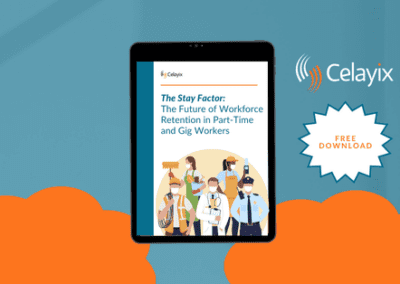Compliance is more than just a buzzword in healthcare. It means following rules, protecting patients, and keeping...
Healthcare
read more
Tips for building a 24 hour shift schedule
Have you heard of a 24 hour shift schedule? Yes, they do exist! You may be wondering if there’s any demand for such a...
How to Motivate Your Employees – An Infographic
Fact: Employees work 20% better when motivated. Becoming an expert on how to motivate your employees might be the best...

What is a 12-Hour Rotating Shift?
12 rotating shifts offer a great balance between 24/7 shift coverage for the business, but work-life balance for the employee. Let's take a deeper look into this shift pattern.

Connecticut Veterans Hospital Eliminates Overtime
In this case study, the State of Connecticut's Department of Veterans' Affairs Hospital describes how they were able to eliminate all scheduling errors and overtime costs using Celayix shift-scheduling and time & attendance software.

Workplace Bullying – How to Manage it Effectively
Workplace bullying is a common issue across the United States. As a manager, it can be difficult to effectively handle. Here, we break down the impact of bullying on the workplace, and what managers can do to help!

How To Incorporate Flexible Scheduling In The Workplace
Flexible scheduling has been growing in popularity in recent years. With many benefits for both employees and employers, its easy to see why!

Understanding and Managing Break Laws
How well do you know and manage break laws in your state? They are a key factor in employee satisfaction, and in turn, employee retention! Here's everything you need to know.

The Stay Factor: The Future of Workforce Retention in Part-Time and Gig Workers
In our latest eBook, we're breaking down how employers can improve workforce retention in gig workers, shift workers and part-time workers!

Transform your Care Home with Workforce Management
Running a care home is no easy feat. You have patients, suppliers, employees, families and many more moving parts to manage. There is one area that can transform your whole practice when managed effectively - workforce management. Take a look at how to manage that here.

How to Create an Effective Shift Swapping Policy
An effective shift swapping policy can make life easier for both schedulers and employees. Avoid last minute scrambles and no-shows by creating one today. Let's see how!

Common Healthcare Staffing Mistakes to Avoid
Healthcare staffing is a make or break issue for any healthcare organization thanks to tight budgets, fluctuating demand and burnout. We break down some common mistakes in the area and how to avoid them!

